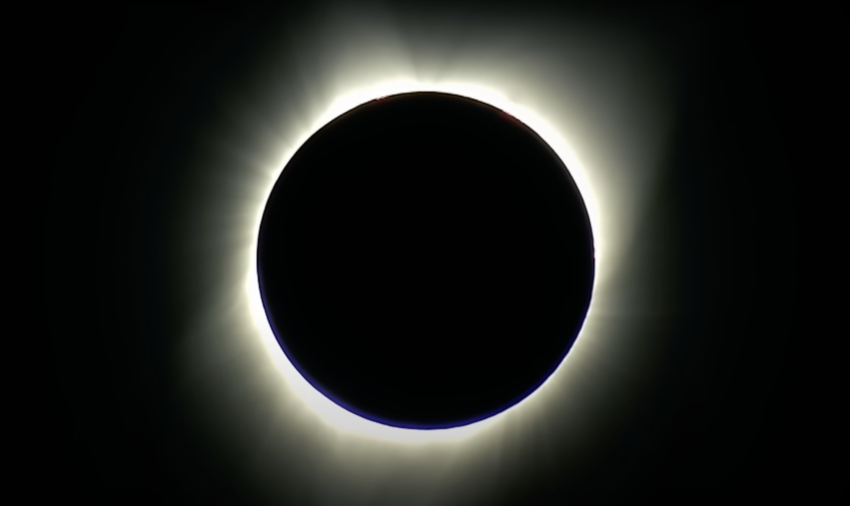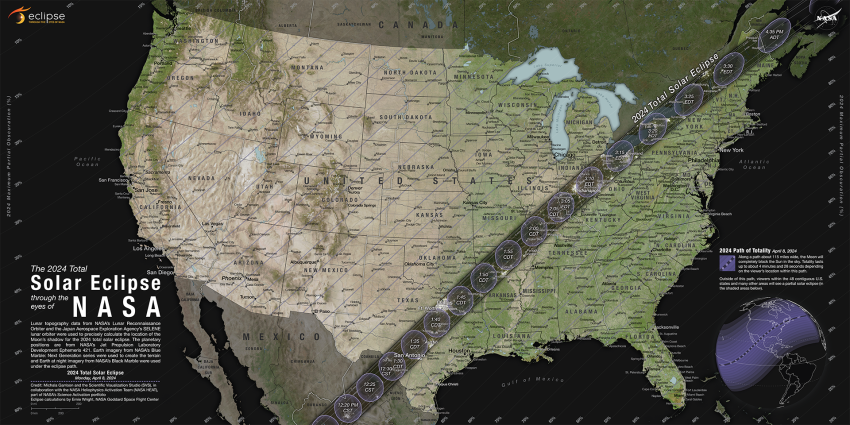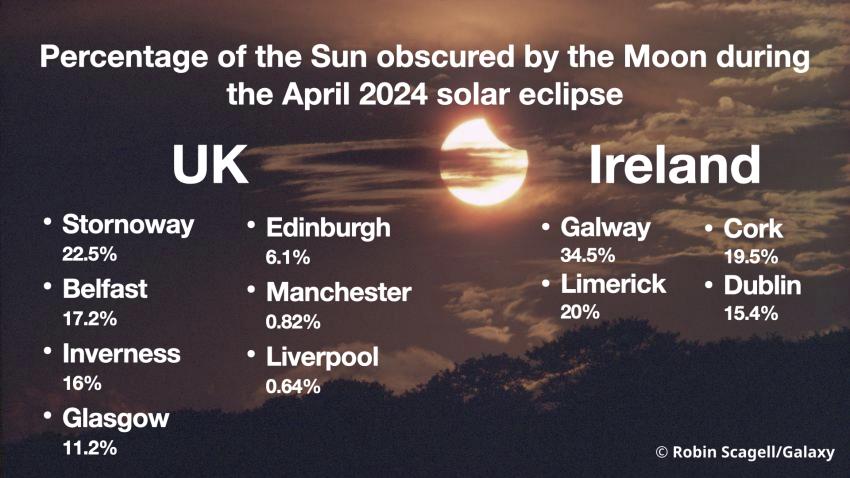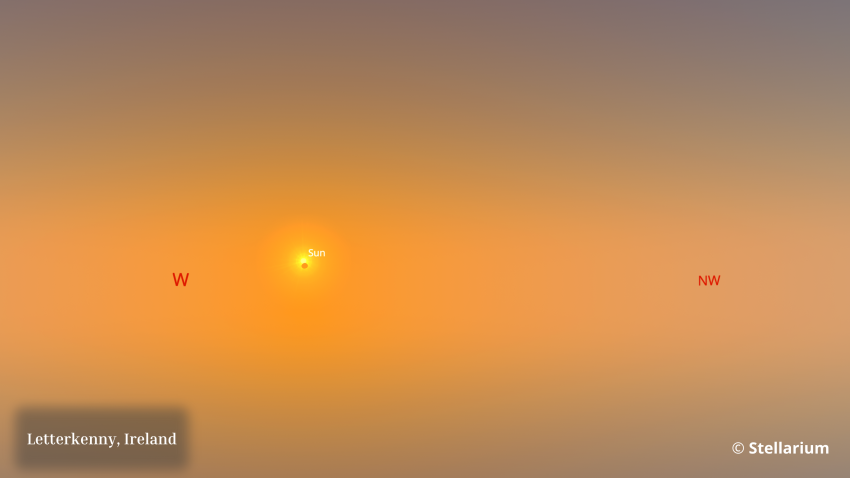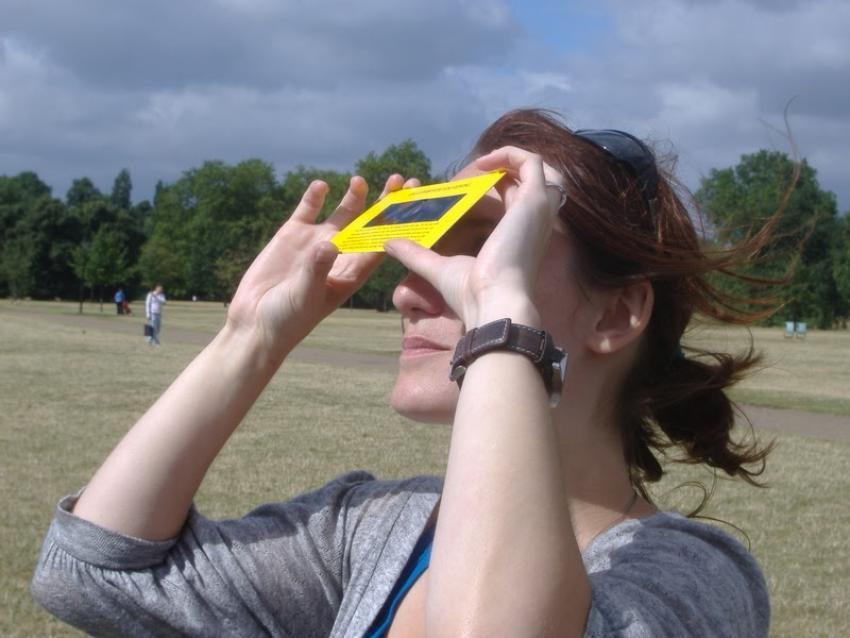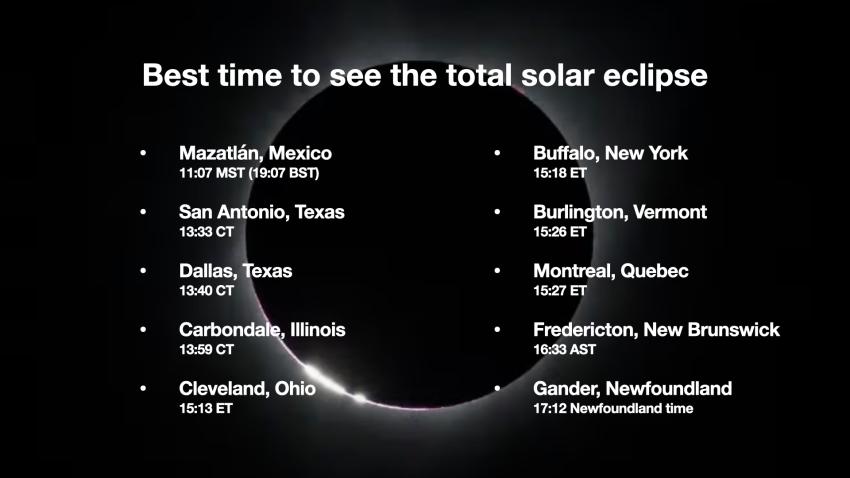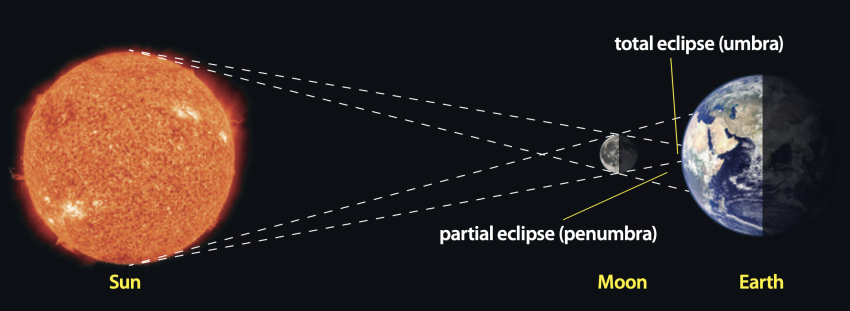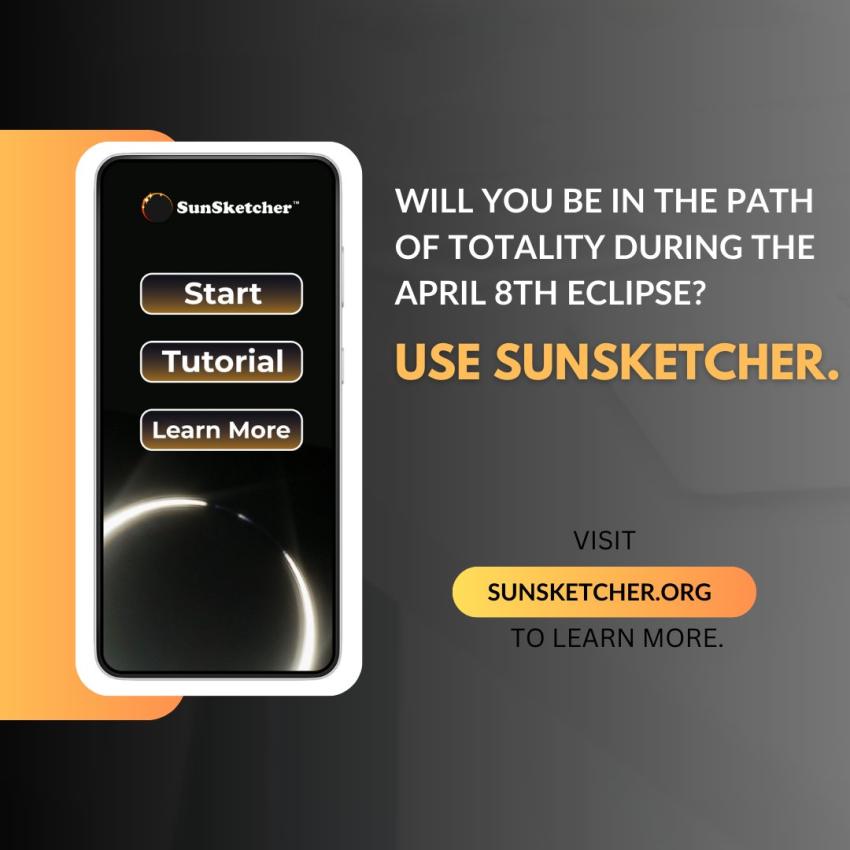A total solar eclipse will put on a show for people across North America on Monday (April 8) - but there’s also a chance the western UK and Ireland could get in on the act, too.
That’s because observers on the European side of the Atlantic may be treated to a partial glimpse of the spectacular natural phenomenon, which happens when the Moon crosses paths with the Sun and blocks it from view.
“In those circumstances the Moon casts a tiny shadow on the surface of the Earth and the people who stand in that shadow as it moves over them are lucky enough to see a total solar eclipse,” Dr Robert Massey, deputy director of the Royal Astronomical Society, said in a video explainer.
Dubbed the “Great American Eclipse”, its path of totality - where the eclipse will be fully visible - will range from Mexico’s Pacific coast to US states including Texas, Illinois, Ohio and New York.
It will then make its way to Canada, moving from the city of Montreal to the provinces of New Brunswick and Newfoundland.
However, there might be the opportunity to see a partial eclipse just before sunset in the western UK and Ireland, between about 19:50 BST and 20:50 BST.
Edinburgh, Glasgow, Cardiff, Belfast, Manchester and Liverpool are among the British cities likely to have the best potential views, along with County Donegal in Ireland, Dr Massey said.
He added: “There is an outside chance that you can see a partial solar eclipse, where a little bit of the Sun is covered - a small percentage is blocked out by the Moon.
“If you’ve got clear skies, this will be visible just before sunset.”
The last time a total solar eclipse was seen from the UK was in 1999, although the only place to witness totality was Cornwall. Such a spectacle will not be visible again from Britain until 23 September 2090.
There are between two and five solar eclipses each year, with a total eclipse taking place somewhere in the world every 18 months or so. Total solar eclipses are seen every 400 years from any one place on the surface of the Earth.
As always with a solar eclipse, however, it is important to take appropriate safety precautions when trying to view it.
This is because looking directly at the Sun with the naked eye is dangerous and can cause permanent damage or blindness.
“During the partial phase of the eclipse it’s incredibly important because the Sun remains extremely bright,” Dr Massey explained.
“Even when you’ve got a thin crescent left, it’s still easy enough to damage your eyes.
“Instead, what you need to do is either go to a public event where amateur astronomers might be projecting an image of the Sun you can look at, or if you can get hold of certified, proper, good-standard eclipse shades - you can buy them online - they block out most of the harmful light from the Sun.”
The eclipse can also be observed safely with everyday objects such as a kitchen colander or two pieces of paper and a pushpin, which can be used to create a projection screen for the sun’s rays.
In North America, the total solar eclipse will be visible from around 11:00 local time in Mexico (18:00 BST), about 13:30 in Texas (19:30 BST), 15:25 above New York state (20:25 BST), and 17:15 in the eastern Canadian province of Newfoundland (20:45 BST).
People In the US, Canada and Mexico won’t just have the chance to witness a rare astronomical phenomenon, however.
They could also play a vital role in a new scientific endeavour.
The SunSketcher mass participation programme - featured in April’s edition of A&G - has been launched as a way to harvest important data to further our understanding of the Sun’s oblateness.
Although our star appears almost circular at first glance, closer inspection reveals structural features arising from rotation and internal convective motions.
Observing these features requires milli-arcsecond precision, which can be achieved by timing the appearance of ‘Baily's Beads’, the ring effect of the Sun filtered through the Moon's topography.
All people need to take part is a smartphone with the SunSketcher app, which can be downloaded for free on Apple and Android devices. However, they will have to be in the path of totality, so that rules out anyone in the UK and Ireland.
“The SunSketcher project uses smartphones to time the Baily’s Beads very precisely, taking advantage of GPS and the advanced technology in the smartphone cameras,” explained the University of Glasgow’s Hugh Hudson, one of the scientists behind the project.
“Because we know the exact topography of the Moon now, thanks to US and Japanese surveys, we can locate the edge of the Sun to within a few kilometres by timing the appearance of the Baily’s Beads.”
Anybody who has downloaded the app from sunsketcher.org can simply open it up and aim the rear camera of their phone in the direction of the eclipse during its totality.
The app then automatically calculates the times of second and third contacts (when the Baily’s Beads are visible), takes a sequence of images centred on each contact, times them precisely, crops them to show only a small bounding box containing the Sun at different times, and uploads them to a server.
This data will then be used to help calculate the exact shape of the Sun.
Want to learn more about the ‘Great American Eclipse’? Watch our explainer video and view the graphics above. And if you’re lucky enough to get a picture of the eclipse, why not share it with us via our social media accounts.
You can find us on X, Facebook, Instagram, LinkedIn and YouTube.
Media contacts
Sam Tonkin
Royal Astronomical Society
Mob: +44 (0)7802 877700
Robert Massey
Royal Astronomical Society
Mob: +44 (0)7802 877699
Images and captions
Caption: A total solar eclipse (pictured) will put on a show for people across North America on Monday April 8 - but there’s also a chance the western UK and Ireland could get in on the act, too.
Credit: NASA
Map of the April 2024 solar eclipse
Caption: This NASA map shows the path of totality for the total solar eclipse which will be visible across North America on 8 April 2024.
Credit: NASA
Timings of the North America eclipse
Caption: In North America, the total solar eclipse will be visible from around 11:00 local time in Mexico (18:00 BST), about 13:30 in Texas (19:30 BST), 15:25 above New York state (20:25 BST), and 17:15 in the eastern Canadian province of Newfoundland (20:45 BST).
Credit: NASA/Royal Astronomical Society
Caption: This graphic shows the percentage of the Sun which will be obscured by the Moon during the April 2024 solar eclipse.
Credit: Robin Scagell/Galaxy/Royal Astronomical Society
Stellarium view of the solar eclipse
Caption: This graphic from the planetarium software Stellarium shows what the partial solar eclipse could look like from Letterkenny in County Donegal, Ireland.
Credit: Stellarium
Caption: A woman using eclipse shades, certified to safety standards, to view a solar eclipse.
Credit: Robin Scagell
Caption: This diagram shows that a solar eclipse happens when the Moon crosses paths with the Sun and blocks it from view.
Credit: Royal Astronomical Society
Notes for editors
About the Royal Astronomical Society
The Royal Astronomical Society (RAS), founded in 1820, encourages and promotes the study of astronomy, solar-system science, geophysics and closely related branches of science.
The RAS organises scientific meetings, publishes international research and review journals, recognises outstanding achievements by the award of medals and prizes, maintains an extensive library, supports education through grants and outreach activities and represents UK astronomy nationally and internationally. Its more than 4,000 members (Fellows), a third based overseas, include scientific researchers in universities, observatories and laboratories as well as historians of astronomy and others.
The RAS accepts papers for its journals based on the principle of peer review, in which fellow experts on the editorial boards accept the paper as worth considering. The Society issues press releases based on a similar principle, but the organisations and scientists concerned have overall responsibility for their content.


